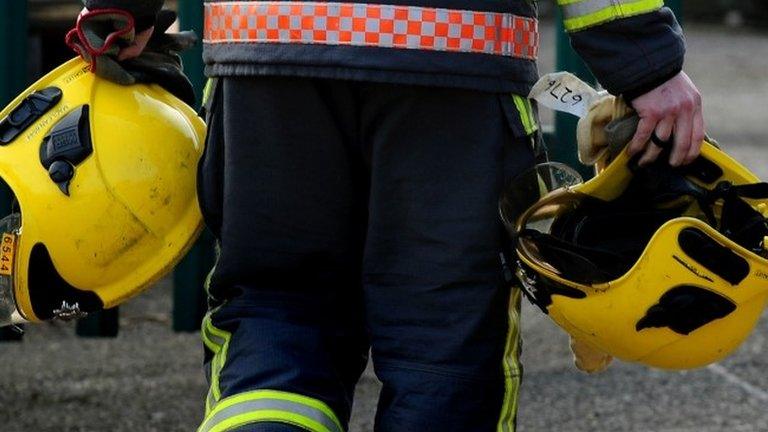What burns in a scrapyard fire?
- Published
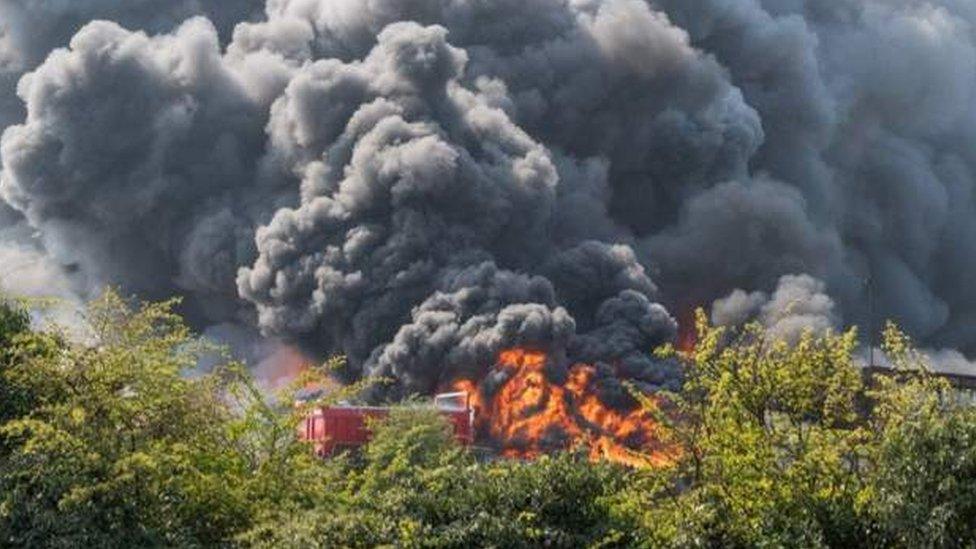
Crews arriving at the scene had to deal with extreme temperatures
A huge scrapyard fire sent plumes of smoke over the Nottinghamshire town of Newark last week.
According to emergency services, the blaze burned for more than 20 hours and caused significant traffic disruption in the surrounding area.
So how do scrapyards - which typically contain hundreds of tonnes of metal - actually catch fire? And what makes them so difficult to tackle?
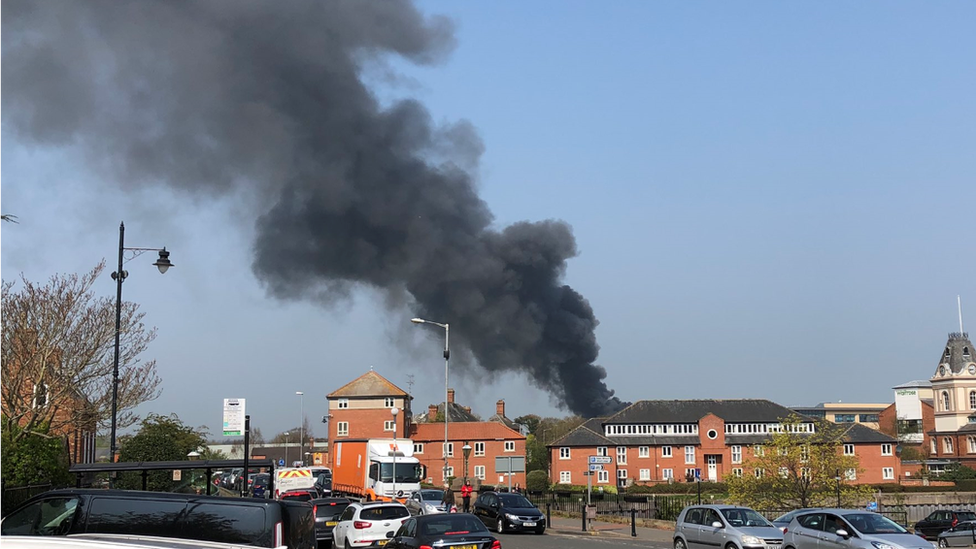
The smoke could be seen from miles away
How common are scrapyard fires?
They happen more often than you might think.
Earlier this month, 15 cars and 50 tyres were caught up in a blaze at a scrapyard in Swansea, which raged for three hours.
In August, a workshop full of scrap vehicles was destroyed in a fire at a yard near Bristol. The blaze had started in a waste oil tanker at the site.
And in 2017, 100 tonnes of metal and a crane were caught up in fire at a Suffolk scrapyard. The fire service said at the time a battery may have been to blame.
The same year, 50 firefighters were needed to put out a burning mound of metal at a recycling site in Swindon in the middle of the night.
But the Newark metal fire - which Nottinghamshire Fire and Rescue Service said "predominately" involved vehicle parts - was far bigger than all of them.
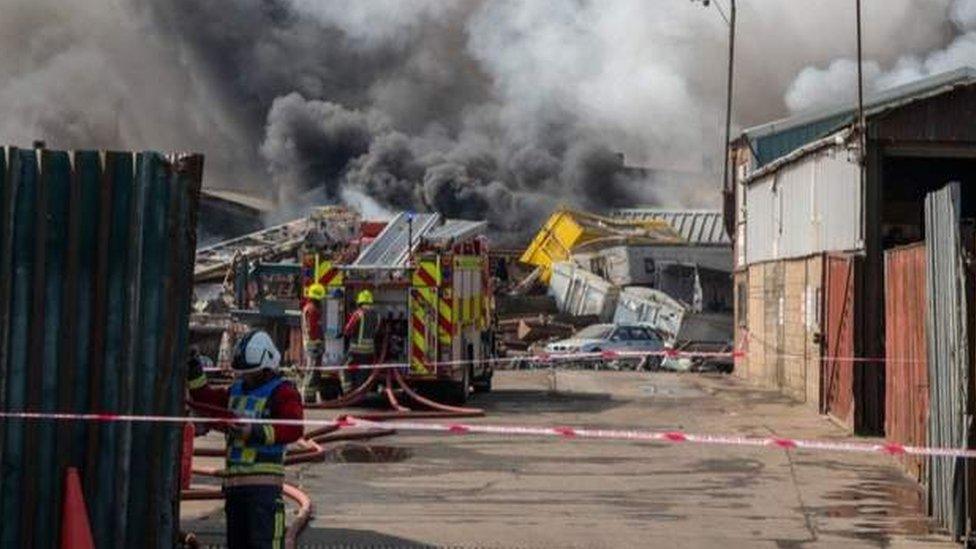
The presence of magnesium in a corner of the scrapyard made the fire difficult to extinguish
What are the most combustible components of cars?
During the Newark blaze, it was reported that about 1,000 tonnes of metal were on fire, but the following morning incident commander Colin Poyzer told the BBC that non-metallic car components had formed part of the burning pile.
He said: "Because this scrap metal was predominantly vehicles, there is obviously material within the vehicles that will burn - there's fuel, plastics, seat materials before the vehicles are fully stripped and shredded. We think it's these materials that have been burning."
But he added that magnesium - a lightweight metal commonly used in engine parts - was also believed to have been involved, and complicated efforts to put out the blaze.
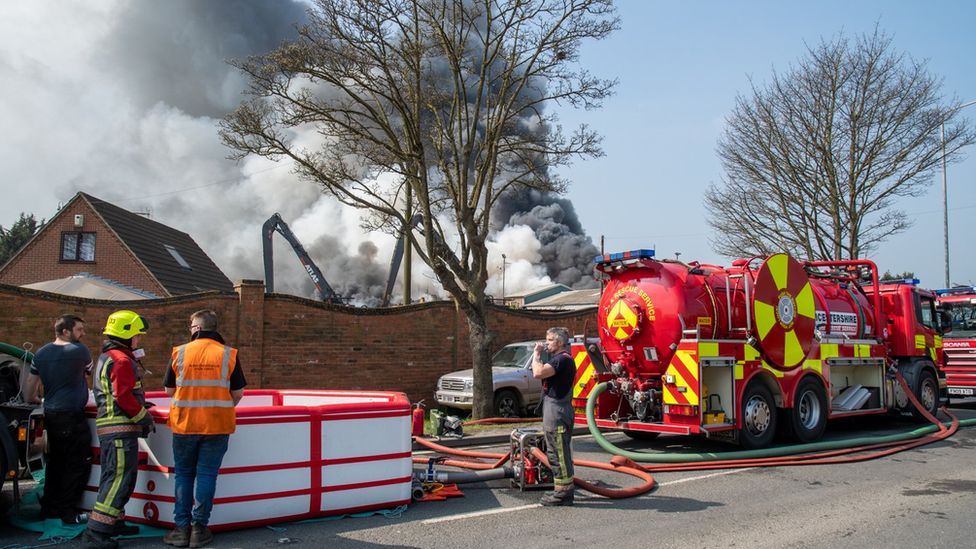
Twelve crews were invoved in the firefighting operation
Why is magnesium a problem?
The metal may be a popular choice with vehicle manufacturers but is less popular with firefighters.
Speaking after 20 hours of working to put the fire out, Mr Poyzer said: "Although some metals will burn, we have an issue with magnesium in particular.
"When you put water on it, it oxidises, it separates the molecules and actually makes the fire worse.
He said a colleague who specialises in hazardous materials believes a corner of the site where the main part of the fire broke out contained "a lot" of magnesium parts.
In the end fire crews had to let it burn itself out.
However, Mr Poyzer said that alternatively they would use a dry powder agent or dry sand.
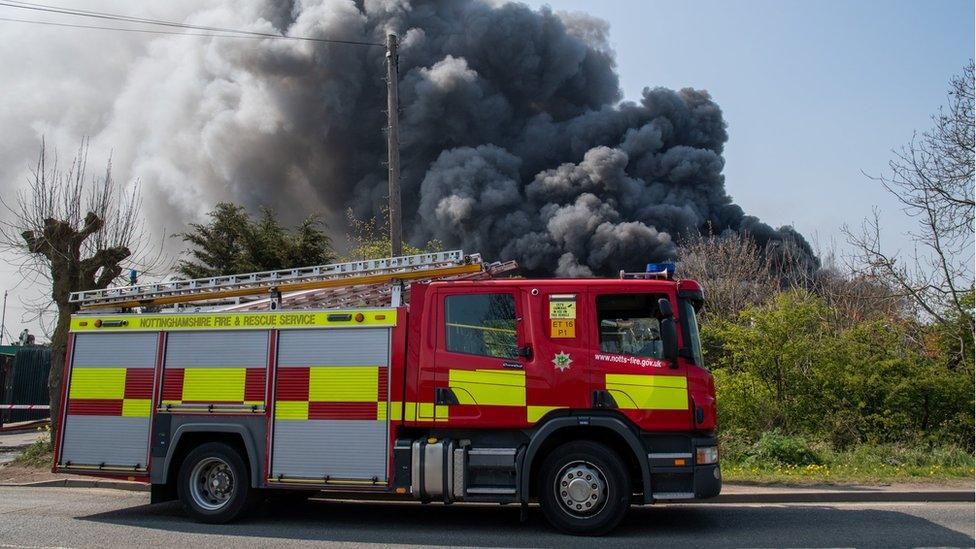
The scrapyard fire took nearly 24 hours to put out
But what about the other metal components of cars? Did they burn too?
Alongside magnesium, the fire service said the blaze involved steel, lead, brass, aluminium, copper, bronze and tin.
Much of it fused together, hampering efforts to tackle the fire - but how much was actually burning?
Dr Russell Goodall, a metallurgy expert from the University of Sheffield, said: "The first question is what is burning? While there are many features we might pick on, like it being hot, there being flames or smoke, etc, it can be defined by a chemical reaction - the reaction with oxygen in the air which, for flammable materials, lets out a lot of energy.
"Most metals under normal conditions will combine with oxygen to some small extent, as in corrosion or rusting processes, but this happens at a very slow speed, and doesn't free the large amounts of energy quickly that we associate with burning.
"To get a combustion reaction with a metal, we need to speed things up. One of the easiest ways to speed up the chemical reaction is to increase the temperature, and metals are more likely to burn - react violently with oxygen - if the temperature is high.
"The reason we don't normally see this behaviour is that the temperatures needed are very much higher than we encounter in normal life - aluminium melts at 660C, copper at over 1,000C and steels at about 1,400C.
"So it's quite feasible that in a major fire, like at the Newark scrapyard, where temperatures are raised, metals will burn.
"Some metals are more reactive with oxygen than others - magnesium is very reactive and will burn relatively readily - but under the right conditions almost any metal could combust.
"If the reaction does get going, such a fire will be difficult to put out as the temperature of the reaction is higher, so it's harder to get under control."
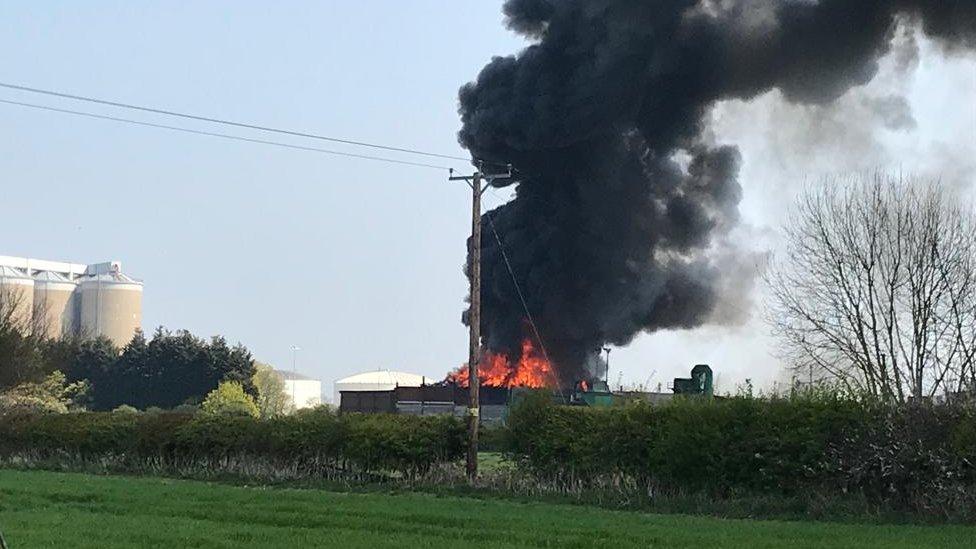
Local residents were advised to close their windows
So what particular issues do fire crews face when dealing with metal fires?
Speaking after the scrapyard fire in Swindon, station manager Gareth Evans said fires involving metal were a tough proposition for crews.
"Metal burns with a very, very intense flame so there is the potential for temperatures in excess of 1,000C in that part of the fire," he said.
In Newark, Mr Poyzer said the firefighting effort was particularly protracted as the metals fused together, created pockets of fire that could not be reached without using industrial machinery to break up the pile.
How did they eventually put it out?
With a monumental amount of water, and diggers, basically.
Mr Poyzer said: "Most metals do not absorb water so the cooling process takes much longer. A common tactic is to create fire breaks to prevent thermal spread (due to radiant and conductive heat).
"The Newark site had good separation between its various processes so that made it easier to stop the fire spreading.
"To provide enough water to deal with a fire of this scale, we had to use a high-volume pump (HVP) which we set into the River Trent.
"This gave us a constant flow of water of around 5,600 litres per minute."

Follow BBC East Midlands on Facebook, external, Twitter, external, or Instagram, external. Send your story ideas to eastmidsnews@bbc.co.uk, external.
- Published17 April 2019

- Published1 April 2019
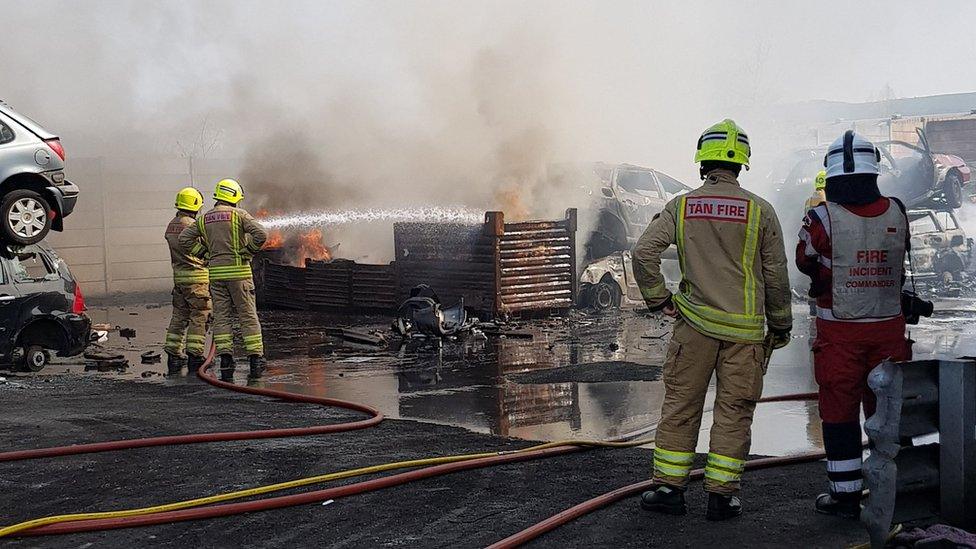
- Published7 August 2018

- Published16 September 2017

- Published15 April 2017

- Published7 October 2015
